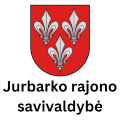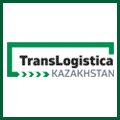Bolloré Africa Logistics is in an intense investment and construction phase to expand the capacity of its container terminals on the western coast of the continent. The French operator expects the sea ports in this region to become increasingly attractive in the coming years, including for Asian shippers.
“We are currently implementing many projects,” CEO Dominique Lafont told Port Finance International during an interview in London.
With 15 ports in Africa, including 14 container terminals and one roll-on roll-off terminal, Bolloré is the number one operator on the continent. The berth extension in Pointe-Noire, in Congo, expected to be completed by April 2014, may be the most representative of its strategy. Mr Lafont describes the container terminal, which is to soon boast an 800m-long 15m-deep quay, as “an introductory offer to Asian shipping lines which until now called in Africa only reluctantly.” The aim is to tell them: “Here is a modern port, like the ones you’re used to elsewhere, which your large capacity ships can access.”
Mr Lafont says that Bolloré Africa Logistics (BAL) won the keenly contested tender in 2008 by offering to turn Pointe-Noire into the main transshipping hub for shipping lines reaching Africa from the South. The plan, to reach this goal, was to significantly increase the terminal’s capacity. “It has been a success,” he says, referring to both how the works have progressed and the volumes have increased. “Now we are discussing with the [terminal’s] main shipping lines, Maersk and CMA CGM, about developing their transshipping in Pointe-Noire, and we are introducing new Asian shipping lines in Pointe-Noire.”
Among the other projects it is conducting, Bolloré expects the third quay of its container terminal in Lomé (Togo) to be completed towards the end of April. It is examining whether it can deepen the water at its Tincan terminal in Lagos (Nigeria). It recently started operations at its brand new terminal in Cotonou (Bénin), which is equipped with two ship-to-shore cranes and should receive two more soon. In Conakry (Guinea), it has already invested €150 million as part of a €500 million project. And earlier this year, it won an Ivorian tender for Abidjan’s second container terminal, in a joint venture with APM Terminals for a total investment of €450 million. “These investments greatly increase the handling capacity of all those ports,” the CEO said, pointing out for instance that the capacity was being doubled in Cotonou and Lomé.
As a result of these “intense” operations of rehabilitation and extension of container terminals, “the West-African port landscape is going to change significantly in the coming years,” said Mr Lafont, who also identified other factors of change.
When the World Bank encouraged African countries to grant port concessions in the early 2000s, each government – one after another – joined the trend, the BAL CEO said. “That trend of granting concessions led to a surge of private investments in to port infrastructure.”
“It is not over,” he predicted. “The growth rates of African economies are going to require new port capacity increases.”
“A second factor that is going to lead to ongoing investments in to the port sector is the shipping lines’ policies. I am referring to the fact that the shipping lines intend to introduce ships of increasing capacity on the African range.”
“As the port offer is developing, so is the demand, and we are progressively moving towards servicing containerships of 4,500-5,000 TEUs,” Mr Lafont said, adding that the trend would probably go beyond that figure. “We think that in a few years’ time, several African ports will be able to handle 8,000 TEU ships.”
All this will make West-African ports more attractive and open up African economies. “In a context of strong economic growth, this will lead, I think, to Asian shippers being more interested – and more present – in Western Africa.”
Port Finance International




.jpg)






